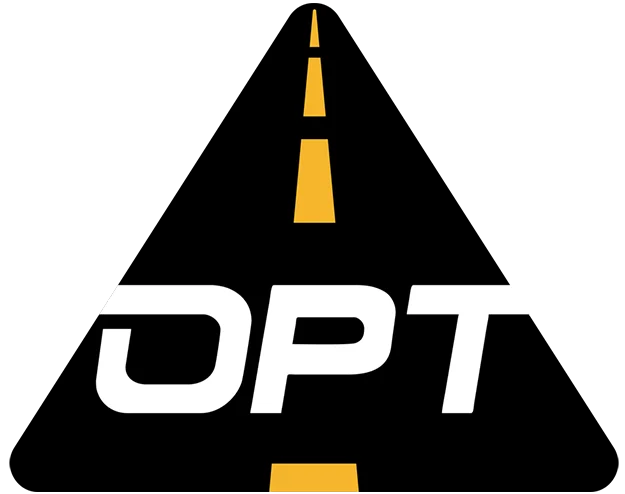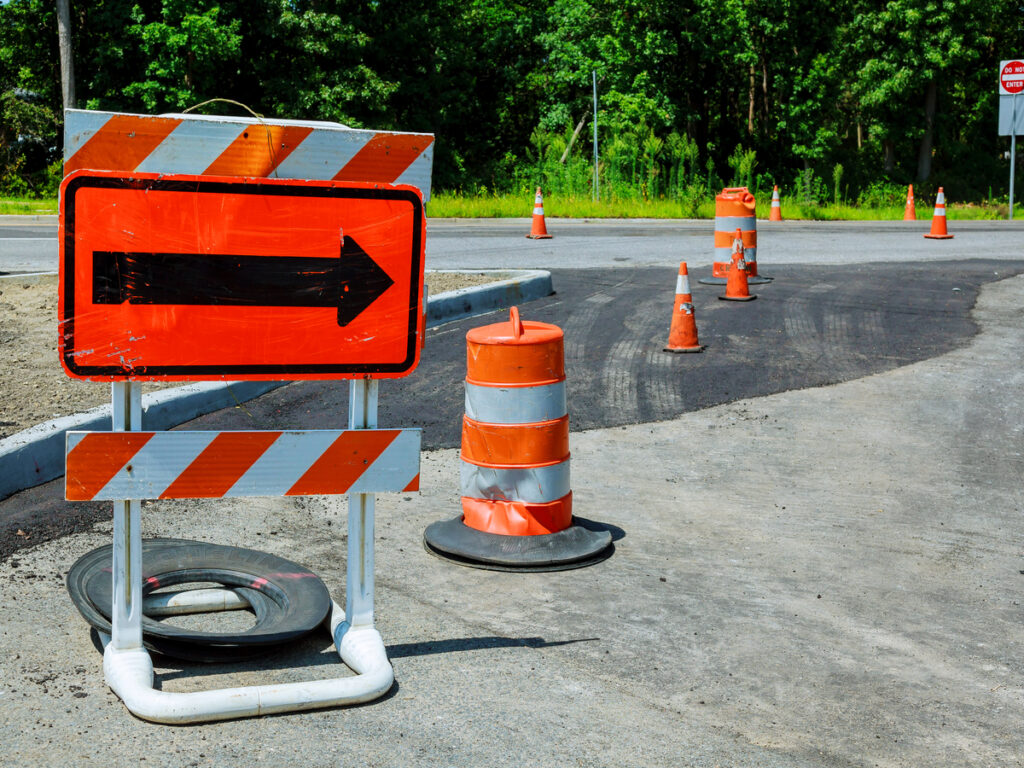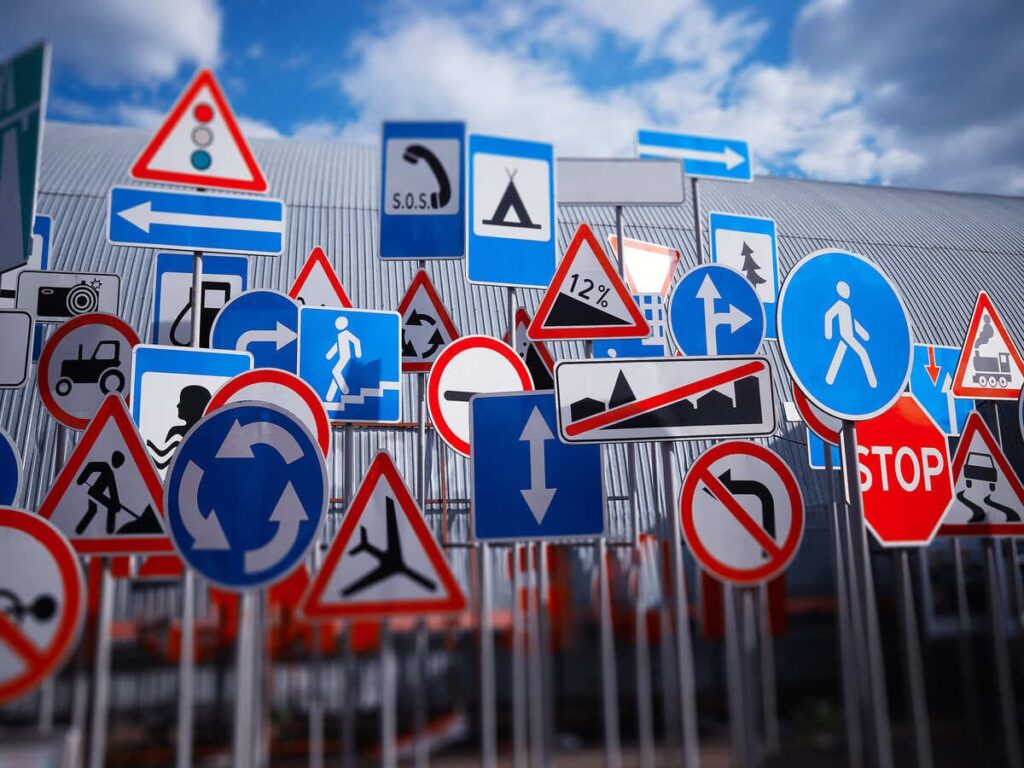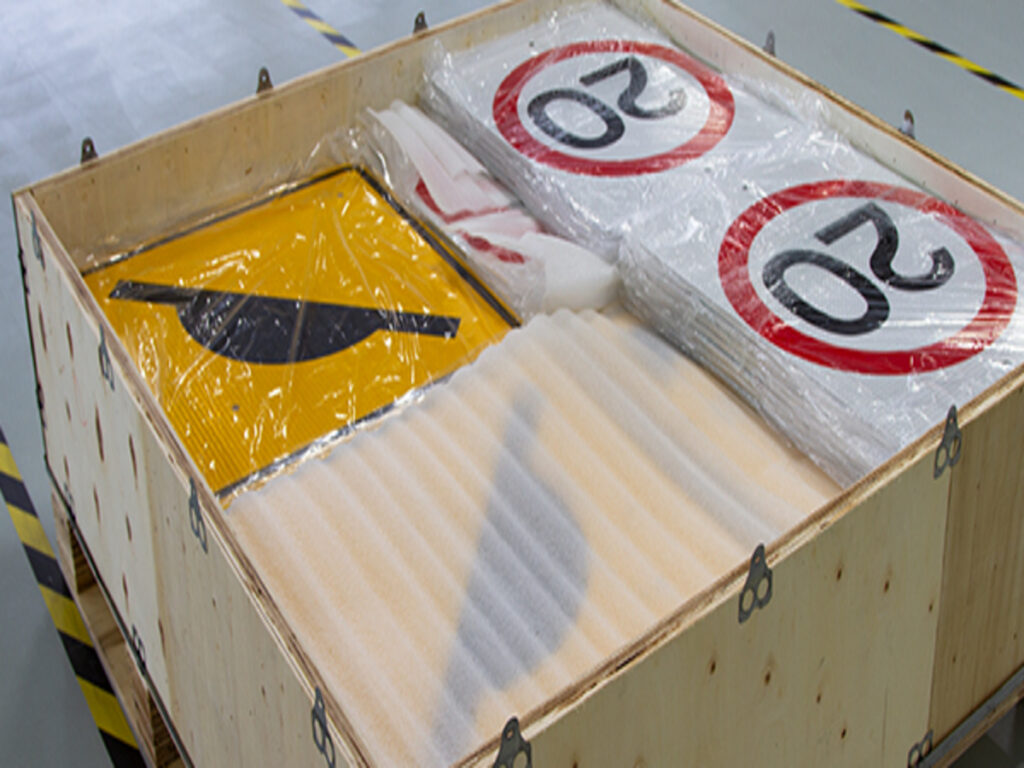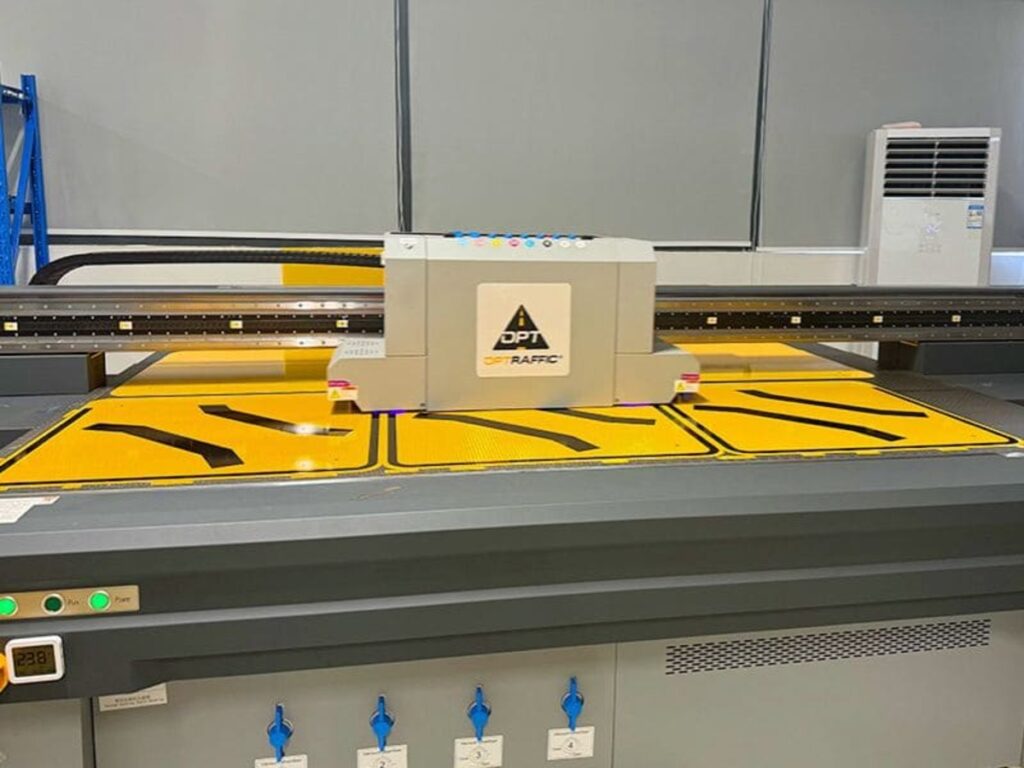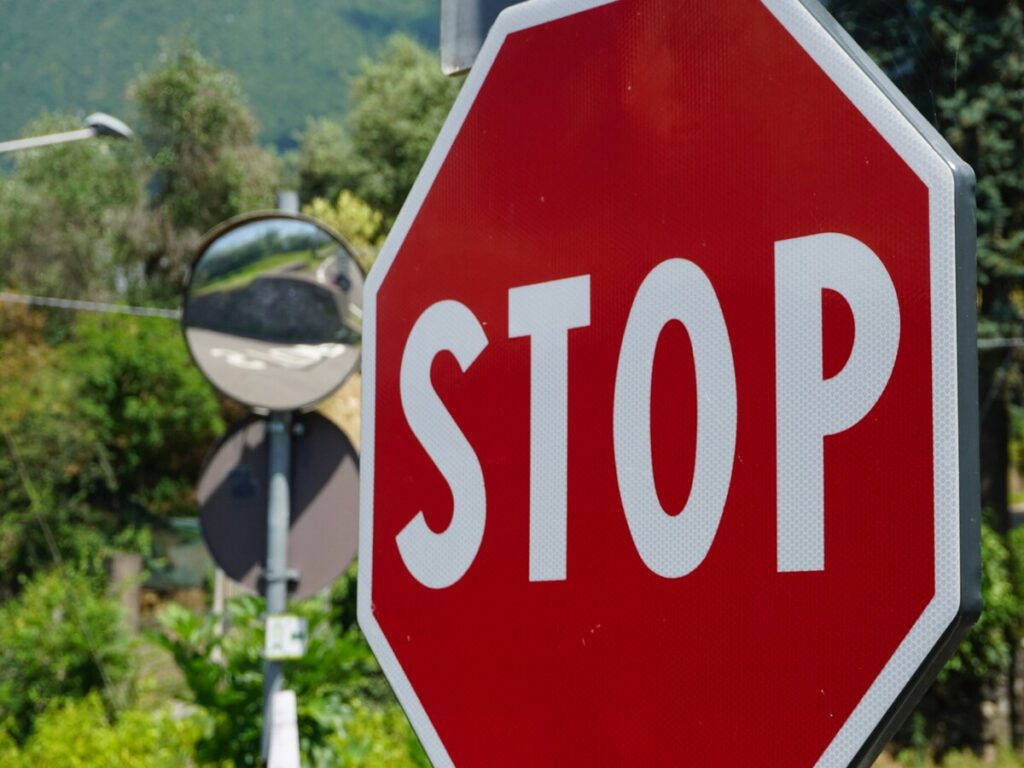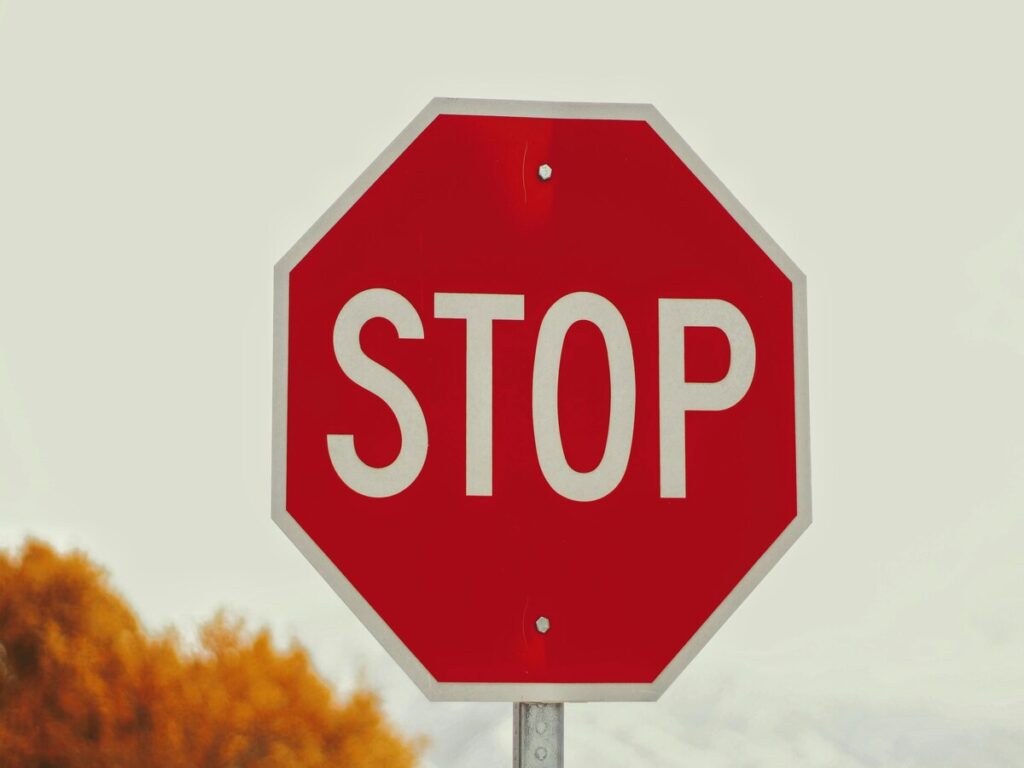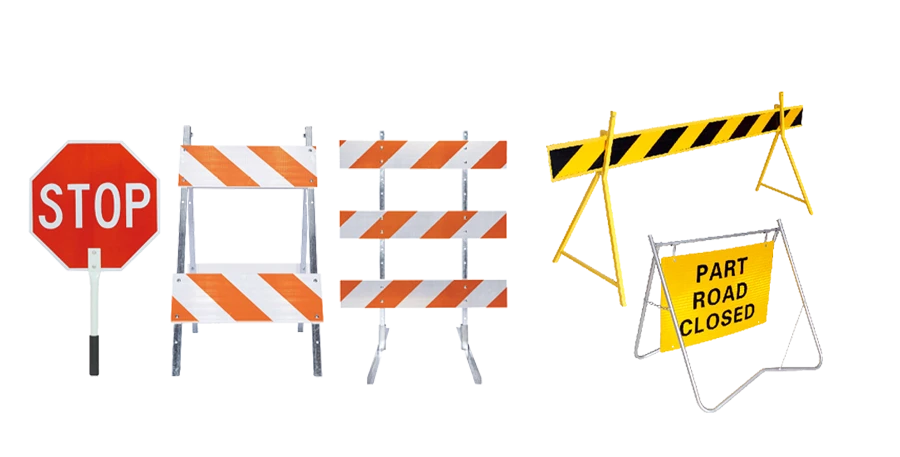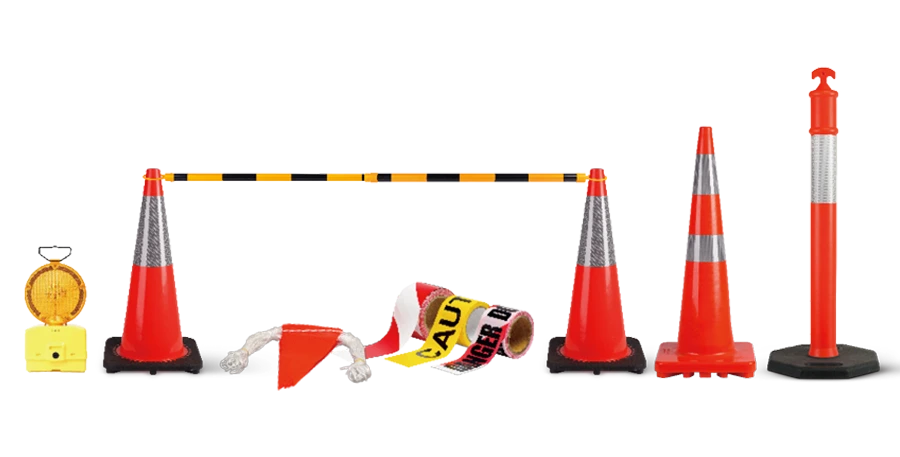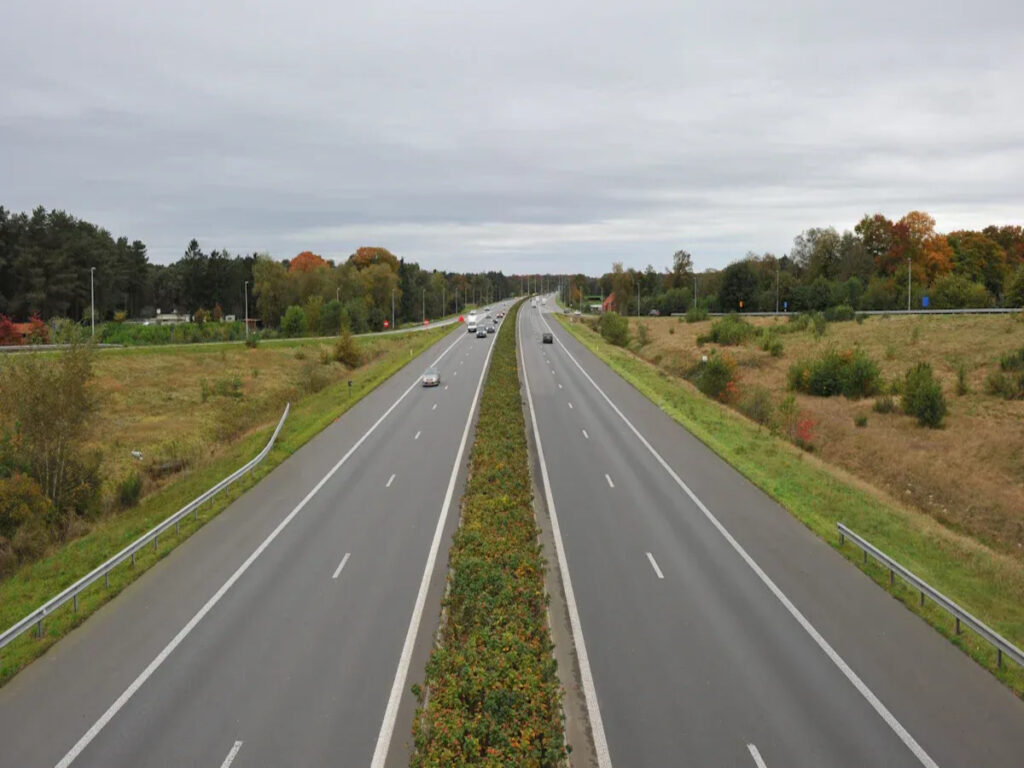
Imagine a driver going down a busy road. Suddenly, a divided highway ends sign shows up. It warns that the median will go away soon. After a few miles, a divided highway sign appears. It shows there is a new barrier between lanes. Both signs need drivers to act fast. Drivers must pay attention and change speed. They also need to switch lanes safely. If drivers do not read these signs right, it can be deadly. から 2010 に 2018, almost 3,000 fatal wrong-way crashes happened in the U.S. Many were caused by confusion over road signs. Knowing these signs can save lives.
For traffic management companies, OPTRAFFIC offers custom signage solutions that help reduce confusion and enhance road safety. Whether it’s Divided Highway Ends or Divided Highway signs, 耐久性を提供します, クリア, and high-quality signs tailored to your specific needs. Our customizable signs help ensure that drivers are properly alerted, reducing the risk of accidents and improving overall traffic flow. Contact オプトラフィック today to discuss your custom signage requirements and make your roads safer.
キーテイクアウト
- Divided highway signs tell drivers the road will change. Knowing these signs helps stop crashes.
- The Divided Highway Ends Sign means the median will go away. Drivers need to slow down and look for cars coming.
- The Divided Highway Begins Sign means a new median will show up. Drivers should stay in their lane and follow the new lines.
- Putting signs in the right place and keeping them clear is very important for safety. Good signs help drivers act fast and not get mixed up.
- Knowing road signs makes drivers pay more attention. Teaching drivers about these signs can lower the number of crashes a lot.
Divided Highway Signs in Traffic Management
What Is a Divided Highway?
A divided highway is a road with a barrier or median in the middle. This keeps cars going different ways apart. The 連邦高速道路局 says these roads have special entry and exit spots. Drivers can only get on or off at certain places. This stops cars from crossing into the other side. Most divided highways have more than one lane each way. This helps cars move better and lowers the chance of head-on crashes.
Drivers feel safer on a divided highway. The median or barrier keeps cars apart. そうすることで重大な事故が起こりにくくなる.
Why Are Warning Signs Essential?
Warning signs are very important for road safety. They help drivers know what is coming and what to do. A divided highway sign shows when the road will change. It tells drivers when a median starts or ends. These signs are part of a big system that helps guide and warn drivers.
- Divided highway signs give clear directions. Drivers can slow down or change lanes safely.
- Public authorities put up these signs to keep people safe.
- Signs help drivers notice road changes and avoid surprises.
- Good signs help traffic move and stop traffic jams.
When drivers see a warning sign, they can get ready for what is ahead. This extra time can help stop accidents. Studies show that clear signs help drivers and people walking stay safe. They also help traffic move well, 忙しいときでさえ.
Divided Highway Sign Differences
Divided Highway Ends Sign
The Divided Highway Ends Sign tells drivers that the road ahead will change. The median or barrier that separates traffic will end soon. Drivers see this sign as a yellow diamond with two arrows pointing up and down. A small divider sits between the arrows, but it gets smaller at the top. This shape shows that the divider will disappear.
When drivers spot this sign, they know the road will become a single roadway. Cars traveling in both directions will share the same space. Drivers must pay close attention. They need to slow down and watch for cars coming from the other way. Lane changes become more important. The risk of head-on crashes goes up when the divider ends.
ヒント: Drivers should check their mirrors and look for gaps in traffic before merging. Staying alert helps everyone stay safe.
Divided Highway Begins Sign
The Divided Highway Begins Sign signals a new start. The road ahead will split, and a median or barrier will appear between lanes. This sign looks like a yellow diamond with two arrows. The arrows point up and down, but a thick divider sits between them at the bottom. The divider gets wider at the top, showing that the separation will begin.
Drivers who see this sign know they will enter a safer area. The divider keeps cars apart. Lane discipline becomes important. Drivers should stay in their lane and avoid sudden moves. The divided highway sign helps people get ready for the change.
注記: Drivers should watch for new lane markings and follow posted speed limits. The start of a divided highway often means faster traffic.
Key Differences and Driver Response
Both signs help drivers adjust to changes in the road. Each sign has a clear purpose and appearance. 主な違いを示す表は次のとおりです:
| 特徴 | Divided Highway Ends Sign | Divided Highway Begins Sign |
|---|---|---|
| 外観 | Divider narrows at top | Divider widens at top |
| 目的 | Warns divider will end | Warns divider will begin |
| Driver Action | Prepare to merge, 減速する | Stay in lane, follow divider |
| 安全性への影響 | Prevents head-on crashes | Improves lane discipline |
Drivers respond to these signs in different ways:
- When the divider ends, drivers must watch for oncoming traffic and merge safely.
- When the divider begins, drivers should stay in their lane and follow the new road layout.
- Both signs give advance warning. Drivers get time to adjust speed and position.
The divided highway sign plays a big role in keeping roads safe. Clear signs help drivers avoid confusion and make smart choices. People who understand these signs can prevent accidents and keep traffic moving smoothly.
Placement and Maintenance Best Practices
配置ガイドライン
Drivers rely on clear signs to make safe choices. The right placement of a divided highway sign can prevent confusion and accidents. Traffic experts follow MUTCD guidelines to make sure every sign stands out. 標識は見やすくなければなりません, 遠くからでも. Here are some important placement rules:
- The bottom of the sign should be at least 7 feet above the curb or the edge of the road. This helps drivers and pedestrians spot the sign quickly.
- If the sign is above a sidewalk or a pedestrian area, it should also be at least 7 フィートの高さ.
- 長期プロジェクトの場合, sign supports may be 5 または 7 高さの足, depending on the location and type of road.
Placing signs at the right height and spot keeps everyone safe. Drivers get more time to react when they see the sign early. Good placement also helps people walking or biking stay aware of changes in the road.
ヒント: Signs should never be hidden by trees, 駐車中の車, または他のオブジェクト. Clear sight lines matter most.
Maintenance Essentials
A sign that is hard to read or faded can cause problems. Regular maintenance keeps divided highway signs working well. Traffic crews use several methods to check and replace signs:
- Inspectors look at signs at night to check if they reflect enough light. Signs that do not meet standards get replaced.
- Special tools measure how much light a sign reflects. If the sign fails the test, it gets swapped out.
- Some signs get replaced after a set number of years, based on how long they last in that area.
- In busy corridors, all signs may be replaced at the same time to keep things simple.
- Crews may use a sample group of signs to decide when to replace others.
- Engineers sometimes use extra studies to find the best way to keep signs safe.
Regular checks and quick replacements help drivers trust the signs. Well-maintained signs guide everyone and reduce mistakes on the road.
Divided Highway Sign Safety Impact
事故の軽減
Divided highway signs help lower the number of crashes. ドライバーがこれらの兆候を見るとき, they know what is coming. Studies show that clear signs can cut accidents by 30% in risky places. Drivers slow down and pay more attention when they see a divided highway sign. This helps them avoid quick lane changes or unsafe moves. If signs are missing or hard to see, more accidents happen. Experts agree that good signs save lives and make roads safer for all.
Preventing Driver Confusion
忙しい交差点 can confuse drivers and cause mistakes. Divided highway signs help drivers know where to go and what to do. Studies show that early signs give drivers the info they need before a hard spot. Overhead lane-use signs work better than roadside signs for picking lanes. 1つの研究で, 79% of people said overhead signs helped them more. Roadway markings alone do not work well, 特に夜や雨の時は. Early signs are the best way to guide drivers.
| Signage Type | 効果 |
|---|---|
| Overhead Lane-Use Signs | 79% found them more effective for lane assignments |
| Roadway Markings | 84% said they are not effective alone |
| Advance Signing | Gives critical info before intersections |
避けるべき一般的な間違い
Drivers sometimes make mistakes with divided highway signs. Some ignore the sign or think it does not matter. Some drivers speed up instead of slowing down. Others miss the sign if it is blocked or faded. Teaching drivers helps fix these problems. Public outreach reminds drivers to stay alert, even if signs are not active. Schools and safety groups explain what each sign means and why it matters. Sensor-triggered warnings remind drivers to be extra careful when needed.
| Educational Strategy | 説明 |
|---|---|
| Public Outreach | Reminds drivers to stay cautious, even if signs are not active |
| Education | Explains sign meanings and the need for alertness at intersections |
| Sensor-Triggered Warnings | Highlights the importance of caution when beacons or alerts are activated |
A divided highway sign works best when drivers know what to do. 明確な兆候, good teaching, and regular checks help stop mistakes and keep roads safe.
コンプライアンスと規制
MUTCD規格
The 均一な交通制御装置のマニュアル, またはMUTCD, makes the rules for road signs in the U.S. These rules help keep signs simple and easy to read. The MUTCD says how big a divided highway sign should be and what colors to use. Signs need to be large so drivers can see them from far away. The colors must stand out, with yellow backgrounds and black symbols. Where the sign goes is important too. Signs should be placed before the road changes, so drivers have time to react. The MUTCD also says signs must be easy to see during the day and at night. Signs use reflective materials so drivers can see them in the dark or when it rains.
Traffic workers check if each sign follows these rules. They look at how high the sign is, how far it is from the road, and the angle it faces. サインがルールに従わない場合, they fix it or put up a new one. These steps make sure all drivers get the same warning, 彼らがどこにいても.
地域適応
States and cities sometimes need to change the rules for their own roads. They may have heavy traffic, special lanes, または悪天候. Local groups can add their own rules if they still follow the main MUTCD rules. Here are some ways local areas change divided highway signs:
- Preferential lanes might let some cars enter all the time or only at certain places.
- Managed lanes can switch uses, like becoming HOV lanes during busy times.
- Changeable message signs can show travel times or warn about traffic in managed lanes.
Some states have their own MUTCD books. These must still match the national rules, but they can make exceptions if state law or studies say it is okay. Local groups must follow state rules, which usually match federal rules, unless a federal aid project is happening.
| 側面 | 説明 |
|---|---|
| State MUTCDs | States can have their own MUTCDs or extra rules, but they must match the national MUTCD. |
| Substantial Conformance | State MUTCDs must follow the national MUTCD, but some exceptions are allowed if state law or studies support them. |
| Local Agency Compliance | Local groups must follow state rules, which usually match federal rules, unless a federal aid project is involved. |
These changes help make sure every divided highway sign works well for local drivers and road needs.
Divided Highway Ends and Begins signs help keep roads safe in different ways. Drivers who know what these signs mean pay more attention when the road changes. This helps stop crashes from happening. Experts say that learning about these signs makes drivers more careful and aware.
Learning about road signs helps everyone drive better. Here are some places to learn more:
- MUTCDガイドライン
- Safety Information
- Educational Resources
Traffic management companies can make roads safer by working with experts. Here are some good things about teaming up with OPTRAFFIC:
| 利点 | 説明 |
|---|---|
| Improve Efficiency | VM shows important info fast, gives updates, and helps traffic move. |
| コスト削減 | Cuts down on work and costs, and uses solar power to save money. |
| 交通安全の向上 | VMS gives quick info, stops traffic jams, 道路をより安全にします. |
よくある質問
What does the Divided Highway Ends sign mean?
This sign tells drivers the median or barrier will end soon. Traffic from both directions will share the same road. Drivers should slow down and watch for oncoming cars.
What does a divided highway ahead sign mean?
A divided highway ahead sign indicates that the road ahead will have a median separating traffic flowing in opposite directions. This sign warns drivers to prepare for a road configuration where traffic is divided by a physical barrier such as a concrete median or an open space. It helps drivers adjust to the upcoming driving conditions.
What is the median of a divided highway?
The median of a divided highway is the physical barrier or space that separates the lanes of traffic moving in opposite directions. It can be made of various materials, including concrete, 草, or other forms of separation, depending on the road’s design. The median’s purpose is to keep vehicles traveling in opposite directions apart, improving safety by reducing the risk of head-on collisions.
What to do when you see a divided highway sign?
When you see a divided highway sign, it’s important to stay in your lane and be aware that the road ahead will have a median separating oncoming traffic. Make sure to maintain the appropriate speed and be cautious of vehicles switching lanes. If you’re coming off an undivided road, prepare to adjust your driving habits to the new divided configuration, which often includes different rules for lane use.
How do these signs help prevent accidents?
Divided highway signs give drivers time to adjust speed and position. They warn about changes in the road. This helps drivers avoid sudden moves and lowers the risk of crashes.
What is the difference between divided highway ends and begins sign?
The main difference between divided highway begins and divided highway ends signs lies in their function:
- A divided highway begins sign signals the start of a road with a median, where traffic is separated by a physical barrier, ensuring safer travel.
- A divided highway ends sign warns that the median will disappear, and drivers must prepare for the transition to undivided traffic lanes. This change can require increased attention, speed adjustments, and safe lane changes.
